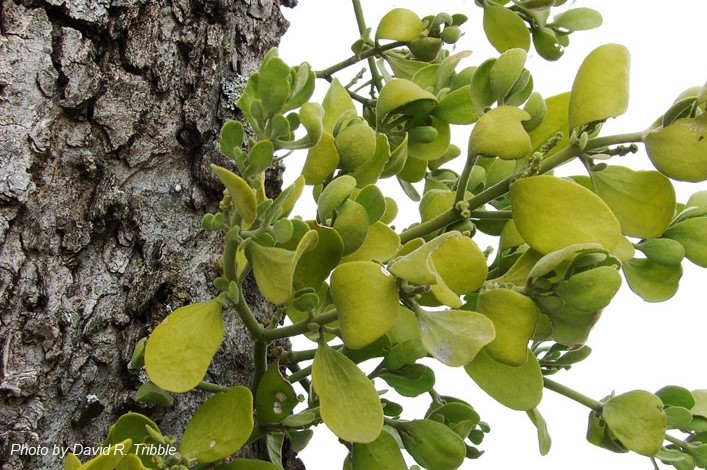
American Mistletoe
February 8, 2021
American mistletoe (Phoradendron leucarpum), also called eastern or oak mistletoe, is a parasitic shrub that grows on the branches and trunks of trees across Virginia. It is most commonly found on oaks, red maples, and gum trees and is most abundant in the swampy forests of Virginia’s Coastal Plain.
Mistletoe is a hemiparasite, meaning the it both produces its own sugars using photosynthesis and extracts nutrients from its host tree. Its rounded, leathery leaves grow from thick twigs emerging from the trunks and branches of its host tree. Its green flowers bloom in late fall and develop into white berries in the winter.
Like its European counterparts, American mistletoe is used as a part of Christmas decoration and tradition. It is both cultivated by specialty farms and harvested from wild populations.
Benefits to Biodiversity | The berries of American mistletoe are poisonous to humans but are eaten by a variety of birds, including cedar waxwings and bluebirds. Mistletoe seeds are covered in a viscous substance that passes through bird’s digestive systems and sticks the seeds to the branches of new host trees.